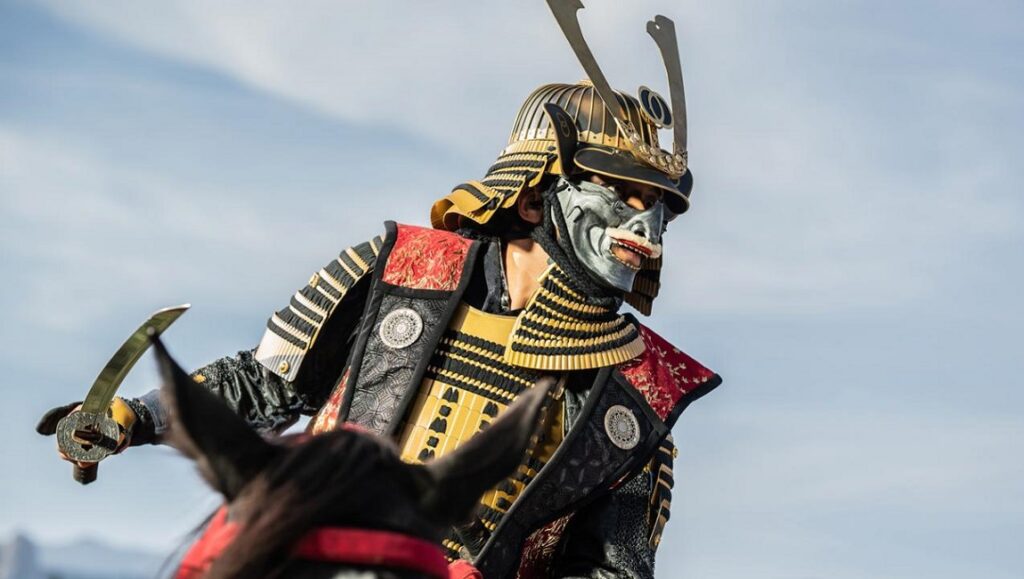Hansan features plenty rousing naval action, but also drags in its first half and too baldly leans on a propagandist view of history to establish its stakes.
In 2014, Lee Han-min’s The Admiral: Roaring Currents outgrossed Avatar to become the highest-grossing film in South Korean history (a record which has since been surpassed). Now, eight years later, Lee is back with the first of two films intended to round out a trilogy about the life of the renowned Admiral Yi Sun-sin (the third is due in 2023). In the 2014 fim, Admiral Yi is an old man, recently released from prison after having been framed for treason by Japanese spies. He’s brought in to take charge of the Korean navy, which had recently been crushed by the Japanese, leaving Yi with only a dozen ships with which to hold off 300. He does so, of course, thanks to his superior knowledge of the terrain, specifically the swirling currents of a key straight off the Korean coast. He lures the Japanese into the straight, and then pummels their ships with his, which though out-numbered, are significantly bigger, stronger, and better armed than their counterparts. He destroys a tenth of their fleet and sends the rest into retreat.
Hansan: Rising Dragon is a prequel, showing the early phases of the war and Yi’s first decisive defeat of the Japanese, one that proved key to his later victory (because the Japanese commander was terrified of him, having seen what he did at Hansan). In 1592, the Japanese invaded Korea as a step on the way to an invasion of Ming Dynasty China. They saw considerable victories on land, and forced the Joseon King to flee first from the capital and then from the fortress at Pyongyang. With the Japanese army closing in, their navy is critical to their resupply. Admiral Yi, however, lures the Japanese navy into a decisive battle, in which he completely obliterates them.
Though set only five years earlier, Admiral Yi in Hansan is no longer played by a wizened Choi Min-sik, but rather Park Hae-il, an actor 15 years younger than Choi (Park also stars this year in Park Chan-wook’s Cannes favorite Decision to Leave). The two films are structurally almost identical: a long, kind of boring first hour sets up the various commanders and potential strategies as spies on both sides convey information about the enemy’s plans. The second hour, though, is all naval battle, with ships flying around the seas, shooting cannons and ramming each other and doing other fun stuff like countering a Crane Formation with a Fish Scale Formation, and so on. A throughline in the 2014 film about one of Yi’s trusted scouts and his wife is given an explanatory backstory in the prequel, which is interesting in execution because all through the earlier film it’s unclear who these people are, and why the wife can’t speak. It almost seems like that film was written after this prequel.
Hansan‘s naval combat (apparently all visual effects this time, as opposed to the actual boats used in 2014, but it’s honestly tough to tell the difference) is tremendously fun, but this writer must admit to being a particular sucker for that kind of thing. Hansan, like Roaring Currents, recalls John Woo’s Red Cliff more than anything, with its long scenes of strategizing paying off in spectacular combat sequences. But Lee doesn’t have Woo’s sense of pacing — the little side missions and set pieces make that five-hour movie just zip by — or the stars to make these stereotypical characters pop. The way Admiral Yi and his Japanese counterpart balance and respond to various challenges from their underlings — all of whom think they know best — offers interesting insight to their characters, but all too often Lee falls back on a propagandistic reading of history, where the Japanese are greedy, ambitious, vain, and stupid while the Koreans are wise, selfless, and brave. In Lee’s simplistic formulation, the war is simply between the righteous and the unrighteous, and there’s never any hint of confusion about which is which.


Comments are closed.